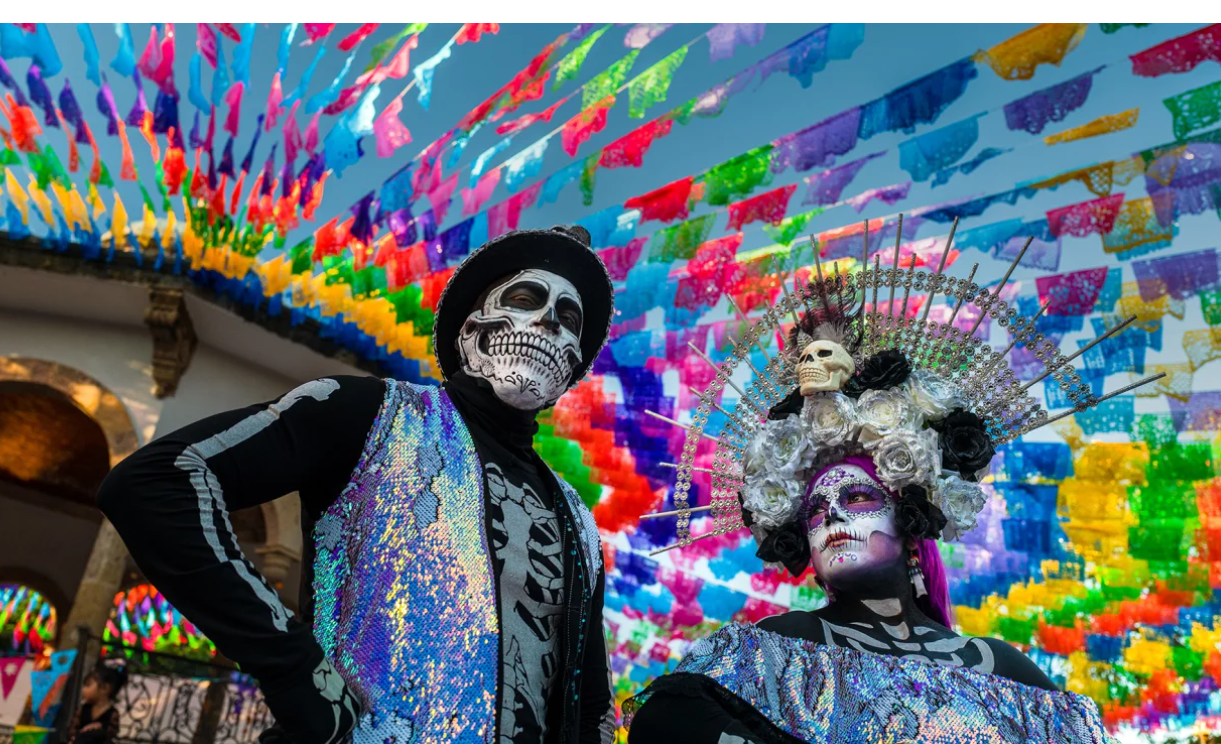The Day of the Dead brims with time-honored customs designed to pay tribute to our forebears

Day of the Dead, or Día de los Muertos in English, is a long-standing custom in Mexico with roots dating back thousands of years.
You've undoubtedly seen the signs that are typically connected to the festival in the US: marigold flowers, calaveras (skulls), and papel picado, bright paper with cutouts. The first scene of "Spectre" and the film "Coco" both make significant references to the holiday.
Día de los Muertos is a celebration of life after death and a day set aside to pay respect to the deceased. Day of the Dead is more about honoring loved ones who have passed away than it is about warding off evil spirits, unlike Halloween, which was originally observed on this day.
What else you need know about this momentous day is provided here.
When is the Dead Day?
Every year on November 1st, Day of the Dead comes to a close on November 2nd. It is thought that the deceased's spirits go back to their homes on those days to spend time with their loved ones.
To whom does the Day of the Dead fall?
While most people connect Day of the Dead with Mexico, other nations—even those outside of Latin America—also observe the occasion in different ways. The first two days of November are also dedicated to celebrating the holiday known as Undas in the Philippines. Filipinos visit the graves of their loved ones and make altars to the deceased, just like Mexicans do.
The day is known as Fèt Gede, or the festival of the dead, in Haiti. Parades are held all around the nation, and people dress in purple, black, and white.
On November 1, 2017, during celebrations honoring the Haitian voodoo spirits of Baron Samdi and Gede on the Day of the Dead in the Cementery of Cite Soleil, in Port-au-Prince, Haiti, a woman devotee dressed as a spirit known as a Gede is seen.
On November 1, 2017, during celebrations honoring the Haitian voodoo spirits of Baron Samdi and Gede on the Day of the Dead in the Cementery of Cite Soleil, in Port-au-Prince, Haiti, a woman devotee dressed as a spirit known as a Gede is seen.
How did the Day of the Dead come to be?
The customs of Native Americans, particularly the Aztecs, are the source of Day of the Dead. Miccaihuitl was a time of honoring the dead that was part of an Aztec ceremony.
However, Catholicism, which was brought to the Americas by the Spanish, had its own holidays: All Saints' Day (November 1) and All Souls' Day (November 2), which also honored the deceased. Día de los Muertos is the result of the Spanish combining Indigenous customs with their own festivals.
What customs surround the Day of the Dead?
Many pay respects to departed family members and loved ones by going to their graves on Day of the Dead. However, people either clean the graves and headstones or adorn them with flowers rather than necessarily going to grieve. While some people play music, others might pray.
The setting, complete with food, drink, and music, is almost party-like. People get together to tell each other stories about their departed loved ones, which preserves their memory.
There are parades and festivals on this day in several Mexican cities. Many people may dress up and paint their faces to resemble bare skulls. In particular, women will dress up as La Catrina, the tall female skeleton who is frequently shown donning an elaborate gown and a magnificent headdress that falls over her head.
While figures such as La Catrina have come to represent Día de los Muertos, the iconography comes from the 1910 sketches of Mexican artist José Guadalupe Posada, who was making fun of the country's upper classes.
On November 1, 2017, near the location of a collapsed building in Mexico City, a crowd gathers in front of an altar to pay tribute to the victims of the September 19 earthquake in Mexico.
On November 1, 2017, near the location of a collapsed building in Mexico City, a crowd gathers in front of an altar to pay tribute to the victims of the September 19 earthquake in Mexico.
Getty Images/AFP/Pedro Pardo
What do ofrendas mean?
The altars, or ofrendas, are among the most revered elements of Day of the Dead celebrations. To memorialize the departed, these altars are erected in residences, educational institutions, and other public spaces.
A sizable picture of the departed loved one will be placed atop the altar by family members, accompanied with vibrant papel picado, or "perforated paper." Since the altars are supposed to depict the four elements, the colored tissue papers stand in for air. Throughout the altars, marigold petals are also present. Their vivid hue and strong aroma are supposed to direct the spirits back home. On the ofrendas, candles are also frequently seen serving as a symbol of the deceased and lighting the way. Pan de muerto is a classic Mexican pan dulce with Aztec roots. Sugar skulls, another popular decoration for ofrendas, are supposed to suggest the omnipresence of death.
The purpose of the salt, which is usually arranged in the form of a cross, is to cleanse the spirits of those who are visiting the ofrenda. Families also set out a jug of water, and occasionally tequila, on the altars so that travelers' souls might refresh themselves after their voyage.
However, personal altars are also possible. Some families will bring mementos from the deceased's life, such as a favorite garment or book, or their favorite cuisine. All of it honors the deceased in their return and acts as a means of remembering them.